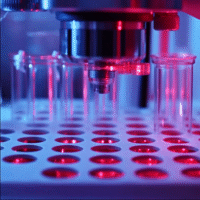Understanding the Trial Results
This study focused on a new diet plan for patients in Egypt with a liver condition called Metabolic Dysfunction-Associated Steatotic Liver Disease (MASLD). Here’s what we learned from the trial:
What Worked?
- Weight Loss: Patients lost an average of 10.9 kg over 6 months.
- Improved Liver Health: Liver fat levels decreased significantly, along with better liver enzyme readings.
- Reduced Inflammation: Key markers of inflammation in the body went down, indicating less stress on the liver.
- Better Antioxidants: Levels of helpful substances that fight damage in the body improved greatly.
What Didn’t Work?
- No Control Group: The study did not compare the diet outcomes to a group not on this diet, which means we can’t be fully sure that the diet alone caused the improvements.
How Does This Help Patients or Clinics?
The results suggest that a specially designed, low-calorie diet can significantly help MASLD patients improve their liver health and reduce inflammation. This can lead to better overall health and fewer complications, making it a potentially powerful tool for doctors treating these patients.
What Can Hospitals or Doctors Do?
- Adopt the Diet Plan: Implement similar culturally tailored diet programs for MASLD patients.
- Monitor Progress: Use simple tools to track weight, liver health, and inflammation markers.
- Encourage Healthy Lifestyles: Promote physical activity and better sleep, as these were improved in the study.
Measurable Outcomes to Track
- Weight loss (in kg)
- Liver enzyme levels (ALT and AST)
- Hepatic steatosis levels (CAP score)
- Inflammatory markers (like TNF-α)
- Antioxidant levels (like SOD and CAT)
AI Tools for Implementation
Consider using AI apps that analyze dietary habits and suggest meal plans based on individual needs, making it easier for patients to follow the diet.
Step-by-Step Plan for Clinics
- Start Small: Begin by introducing the low-calorie diet to a few patients with MASLD.
- Provide Education: Offer resources to help patients understand the diet’s importance.
- Monitor Results: Track patients’ progress closely and make adjustments as needed.
- Gather Feedback: Ask patients about their experiences to improve the program.
- Expand Gradually: Once successful, expand the diet plan to more patients.
Research Link
For more details, you can read the full study here: Culturally adapted hypocaloric diet improves hepatic steatosis.


























